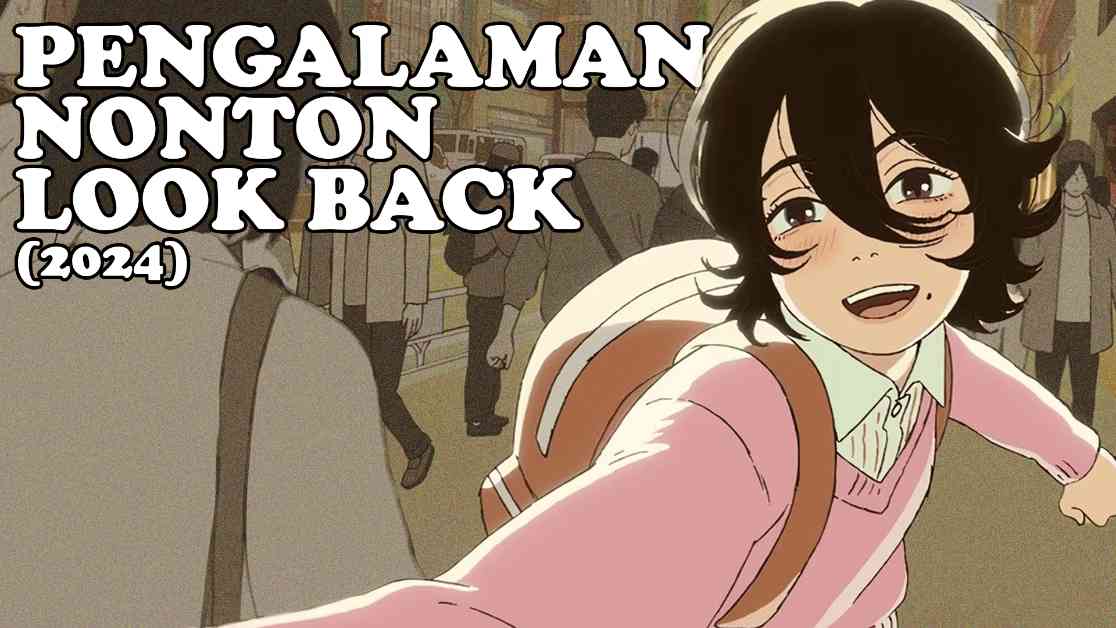**Review of Anime Film Look Back (2024) by Famous Mangaka Tatsuki Fujimoto**
**Look Back**: A Deep Dive into the Emotional Journey of Two Young Artists
In the bustling world of manga and anime, a new film has emerged to capture the hearts of fans worldwide. “Look Back,” created by the renowned mangaka Tatsuki Fujimoto, delves into the personal and emotional journey of two young artists and their unwavering passion for art, specifically manga. Through their story, Fujimoto paints a vivid picture of the struggles, ambitions, and sacrifices that artists often face in their creative process.
**The Story of Look Back: A Brief Overview**
At its core, “Look Back” follows the intertwining paths of two main characters, Fujino and Kyomoto, both young artists connected through their love for manga. Fujino, initially a fiercely competitive and talented artist, crosses paths with Kyomoto, a quiet individual with exceptional skills in background art. Their relationship evolves from rivalry to a productive collaboration, only to face the inevitable separation as they pursue their individual paths in life.
**The Crucial Role of Fujino and Kyomoto**
The dynamic between Fujino and Kyomoto serves as the heart of the narrative. Fujino, initially overconfident, gradually recognizes Kyomoto’s extraordinary talent, inspiring her to stay passionate and motivated in her artistic endeavors. However, life’s journey is never smooth. When Kyomoto decides to pursue higher art education, Fujino finds herself torn between maintaining their friendship or allowing herself to grow and evolve as an individual.
**The Complexity of Friendship**
Their friendship is marked by deep internal conflicts, illustrating how human relationships can significantly impact one’s life journey. Fujino, with a passive-aggressive demeanor, struggles to hold onto Kyomoto in her life, while Kyomoto advocates for focusing on individual goals to achieve true happiness.
**Emotional Conflict and Climax**
The pinnacle of “Look Back” arrives when a tragedy shatters Fujino’s spirit, forcing her to reevaluate her decisions and creative journey. This segment is imbued with profound emotional nuances, depicting feelings of loss, regret, and self-discovery. The tragedy highlights the fragility of an artist’s life, entangled in a world often characterized by solitude and isolation.
**Expert Insight:**
According to renowned art critic, Maya Tanaka, “The emotional depth portrayed in ‘Look Back’ is a testament to Tatsuki Fujimoto’s mastery in storytelling, capturing the essence of an artist’s struggle and triumph.”
**Visual Style and Narrative Impact**
The anime’s visual style encapsulates a somber and silent atmosphere, reinforcing the characters’ sense of isolation. The rough animation style, with imperfect strokes, enhances the emotional depth of each scene, portraying the paradox between art as a form of expression and art as an escape from reality.
**The Haunting Musical Score**
The haunting musical score in the anime heightens the melancholic and tense ambiance prevalent throughout the story. The background music, soft yet tension-filled, mirrors the creative process laden with pressure while offering hope for the characters to persevere.
**Moral Lessons and Reflections from Look Back**
Beyond friendship and art, “Look Back” imparts valuable lessons on the significance of individual journeys in self-discovery. The creative path may feel lonely and arduous, but the ultimate outcome can connect us to the outside world. The narrative also touches on sacrifice, illustrating how an artist must leave their comfort zone to achieve personal growth.
**Stepping Out of Comfort Zones for Growth**
Witnessing Kyomoto’s realization that he must forge his path independently to reach his full potential, and Fujino’s journey of self-realization, shedding the safety net that once cocooned her, reminds us of the necessity to embrace change for personal evolution.
In conclusion, “Look Back” transcends the realm of anime and manga, offering a poignant exploration of human emotions, artistic perseverance, and the intricate dance between friendship and individual growth. Tatsuki Fujimoto’s masterpiece stands as a testament to the enduring power of storytelling and the universal themes that bind us all.






















